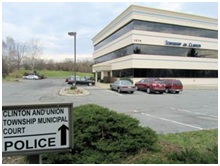
The entire downtown area is designated as a Historic District, which was added to the National Register of Historic Places in September 1980 as District #80002502. Many buildings on Cranbury's Main Street and in the surrounding area date to the 18th or 19th century. George Washington's headquarters were located in Cranbury while planning for the Battle of Monmouth, a major turning point during the Revolutionary War.

Portions of the township were taken on April 1, 1919, to form Plainsboro Township. Among the passengers aboard were Tyrone Power and Cornelius Vanderbilt.Ĭranbury was incorporated as a township by an act of the New Jersey Legislature on March 7, 1872, from portions of both Monroe Township and South Brunswick Township. According to John Quincy Adams, who was aboard the train and who wrote in his diary about it, the train was 3 miles (4.8 km) from Hightstown when the disaster struck, putting the accident near what is now Cranbury Station.

The so-called Hightstown rail accident occurred in or near Cranbury, in 1833. The name has been attributed to wild cranberries that grew in the area. Symmes argued in 1857 that the name was spelled improperly and that the suffix "bury" was more appropriate, leading the name of the community and brook to be changed to "Cranbury" in 1869.

During its earliest years, the location was usually spelled as "Cranberry". As part of orders issued during the Presidency of George Washington, maps of Cranbury were made showing the presence of a church, a mill and 25 other buildings. A home in Cranbury was used by Alexander Hamilton and the Marquis de Lafayette as a headquarters during the American Revolutionary War, and they were visited by General George Washington on June 26, 1778. A deed for a sale of land and improvements dated March 1, 1698, is the earliest evidence of buildings constructed in present-day Cranbury.


 0 kommentar(er)
0 kommentar(er)
